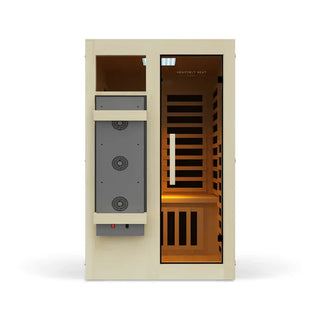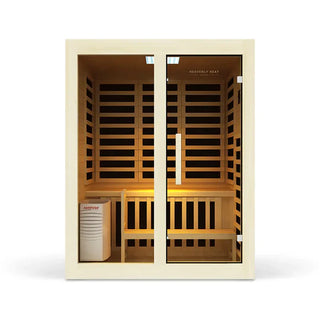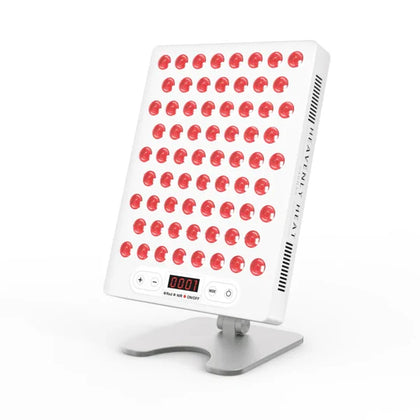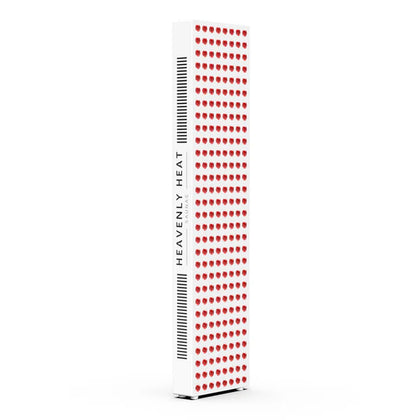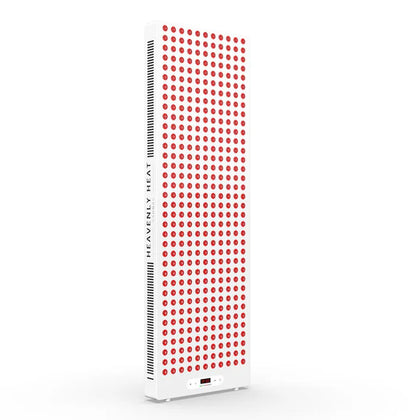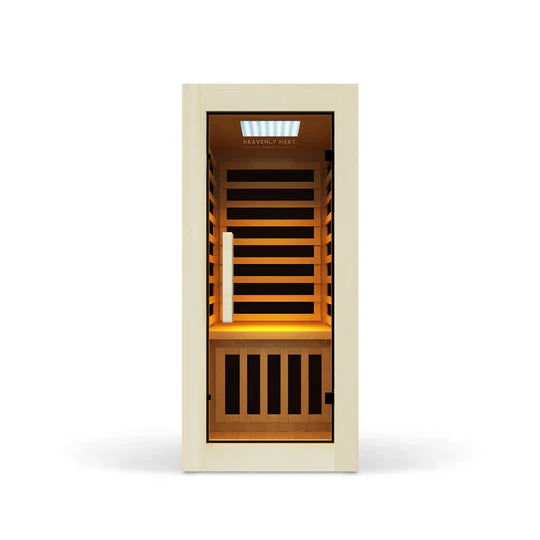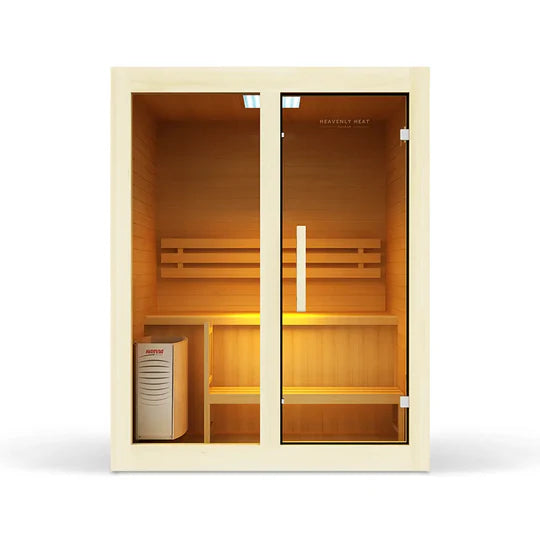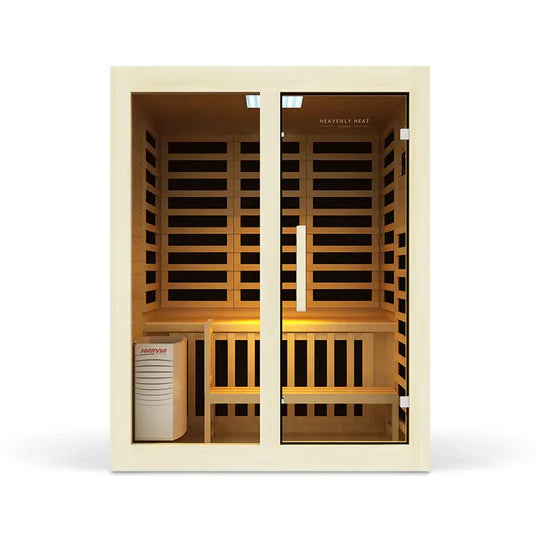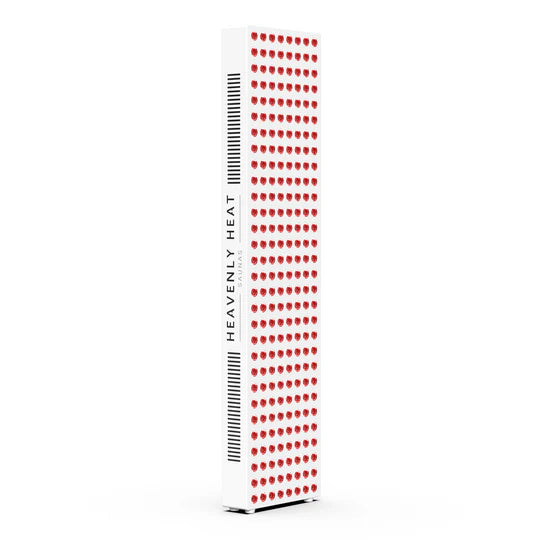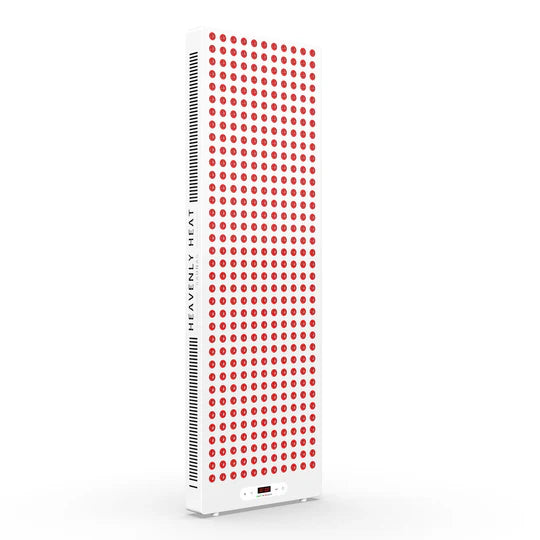Is Red Light Therapy Fsa Eligible?

Wondering if red light therapy is FSA eligible? You’re not alone. With more people using it for pain relief, skin care, and healing, it’s important to know if you can use your FSA funds.
This guide breaks everything down in simple terms so you know what’s covered, what’s not, and how to use your benefits smartly.
Table of contents
Key Takeaway
-
Confirm FSA eligibility: Red light therapy must treat a specific medical condition and require a doctor's prescription.
-
Keep proper documentation: Always save receipts, prescriptions, and treatment records for FSA reimbursement.
-
Choose approved devices: Only certain red light therapy devices and providers qualify for FSA reimbursement.
-
Understand limitations: Red light therapy isn’t a quick fix and may not be suitable for everyone or all conditions.
-
Maximize FSA usage: Use your FSA for eligible treatments, preventive care, and track expenses throughout the year.
What Is an FSA (Flexible Spending Account)?
- An FSA lets you save money before taxes for medical needs: A Flexible Spending Account (FSA) helps you set aside money from your paycheck before taxes are taken out. This means you can use pre-tax dollars to pay for healthcare expenses, saving you money overall.
- You can use your FSA for many common health expenses: FSA money can be used for doctor visits, prescription medications, dental work, and even eye care. It covers everyday health costs most people deal with.
- Millions of people already use FSAs to lower their health costs: In 2022, about 3.2 million Americans were using FSAs. That shows it’s a popular way for people to handle their medical bills more affordably.
- You can only get an FSA if your job offers it: To have an FSA, your employer has to include it in their benefits. You can't open one on your own like other accounts, you must sign up through your workplace.
- There’s a yearly limit to how much you can add to your FSA: Each year, the IRS sets a maximum amount you can contribute to your FSA. This limit can change, so it’s important to check what the current number is before making a plan.
- You could lose unused FSA money if you don’t spend it in time: Unlike some other accounts, an FSA usually doesn’t let you keep leftover money after the year ends. Some employers allow a short grace period or a small carryover, but not all do, so it’s best to use your funds before the deadline.
Understanding FSA vs. HSA Coverage
- FSAs and HSAs both help you save money, but they don’t work the same way: FSAs and HSAs are accounts that help you pay for medical expenses using pre-tax money. That means you can lower your taxes while covering your health costs. But how each account works is quite different.
- An FSA is something your employer gives you, and you must use the money within the year: If you have an FSA, it’s because your employer offers it. You put in money before taxes, but you usually have to spend it all within the same plan year, or you lose it.
- An HSA lets you keep your money every year if you have a high-deductible plan: HSAs are only for people with high-deductible health insurance. But the big advantage? Whatever money you don’t spend stays in your account year after year, growing over time.
- Both accounts save you taxes, but HSAs give you more benefits: You don’t pay taxes on money you put into either account, but HSAs give you even more. The money grows without tax, and when you spend it on health costs, you don’t pay tax then either.
- FSAs help too, but they’re stricter and connected to your job: FSAs also help you save on taxes, but they’re less flexible. They’re tied to your employer, and you might lose the account if you change jobs.
- You need a special health plan to get an HSA, but FSAs are just through your employer: To qualify for an HSA, you must be on a high-deductible health plan. FSAs don’t have this rule, but you can only get one if your job offers it.
- You can’t use both accounts to pay for the same medical bill: If you use your FSA to pay for something, you can’t turn around and ask your HSA to cover it too. Once you’ve paid from one account, that expense is locked to that account only.
Is Red Light Therapy Fsa Eligible?
- You can use FSA for red light therapy if it’s for a real medical problem: Red light therapy isn’t always FSA-eligible, but it can be if you’re using it to treat a health issue , not just for general wellness or beauty.
- FSA will only approve it if your doctor says it’s necessary: To get FSA coverage, you need a doctor to recommend red light therapy for a medical reason , like pain relief, skin problems, or healing from an injury.
- Buying a red light device for home won’t work without a prescription: If you buy a red light therapy device to use at home, FSA will only cover it if you have a prescription . Otherwise, it’s seen as a personal care item, not a medical need.
- A lot of people try red light therapy for health, not just beauty: Data shows 16% of U.S. adults have used red light therapy , often for pain or inflammation, which means it’s becoming more common for real health issues, not just for looks.

How to Check If Red Light Therapy Is FSA Eligible?
- You can’t use FSA for red light therapy just for general wellness: Red light therapy is only covered by FSA if you’re using it to treat a real medical issue, not just for beauty, skincare, or relaxation.
- Your FSA provider decides if red light therapy is allowed: Not all plans treat red light therapy the same, check your FSA provider’s list or website to see if it’s an eligible expense under your plan.
- You may need a doctor’s note to get it approved: Some FSA plans won’t cover red light therapy unless a doctor says it’s necessary for your health, so talk to your healthcare provider first.
- Saving your receipts and paperwork helps with FSA claims: FSA rules can differ between providers, so it’s smart to keep receipts, prescriptions, and anything that proves your therapy was for medical reasons.

Limitations and Restrictions
Not Suitable for Everyone
- Some Health Problems Make This a Risky Option: Red light therapy isn’t safe for everyone. People with serious health issues like skin cancer or eye disorders should avoid it, as it might make their condition worse.
- Kids and Older People Can React More Strongly: Children and elderly people often have more sensitive skin and eyes. This means red light therapy could cause problems for them, even if it’s safe for others.
- It’s Better to Avoid If You’re Pregnant: Pregnant women shouldn’t use red light therapy. Experts aren’t sure if it’s safe during pregnancy, so it’s best to stay on the safe side.
- Some Medicines Can Make Your Skin Too Sensitive: If you're taking medicine that makes your skin or eyes more sensitive to light, red light therapy can cause irritation or damage. Talk to your doctor before trying it.
- Using It the Wrong Way Can Hurt Your Skin or Eyes: Doing red light therapy too often or incorrectly, especially with home devices, can lead to burns, skin damage, or even hurt your eyes. Always follow the proper safety guidelines.
Limited Effectiveness for Severe Conditions
- Red light therapy works less for serious health problems: Red light therapy is usually less helpful when dealing with severe medical conditions. As diseases get worse, it becomes harder for this treatment to make a difference because of tissue damage or complicated illness stages.
- Severe conditions often need stronger treatments: For serious illnesses like cancer or chronic pain, red light therapy alone is not enough. These conditions usually need more powerful or different kinds of treatments.
- Red light therapy helps more with mild to moderate issues: This therapy shows better results with less serious problems, such as acne, wrinkles, or hair loss, where the body has an easier time healing.
- It works best when the damage is not too bad: Red light therapy is most effective when there is only mild or moderate damage to the body, making it a good option for less severe conditions.
Time and Frequency Limitations
Time limitations play a big role in therapy success. Red light therapy requires consistent use, and missing sessions can delay results.
For optimal results, you'll need to undergo treatments one to three times a week over several weeks.
Frequent treatments are necessary, but overuse can also have diminishing returns. The duration of each session must be monitored to avoid overexposure.
Not a Quick Fix
- Red light therapy takes time to work: This therapy isn’t a quick fix. Many health problems need time to get better, and red light therapy is the same.
- You need to be consistent over several weeks: It usually takes multiple sessions over weeks or months before you see real changes. Most people notice improvements between 4 to 12 weeks if they keep using it regularly.
- Using other treatments can help it work faster: Red light therapy works well alone, but combining it with other medicines or treatments can speed up healing and improve results. Your body needs time to respond and start healing.
Not a Replacement for Professional Treatment
Red light therapy isn’t meant to replace professional medical care. It’s important to remember that this therapy doesn’t diagnose or treat serious medical conditions on its own.
While it might help with pain relief or skin health, relying solely on it could lead to missed diagnoses or untreated problems.
If you have a medical condition that requires professional evaluation, this therapy can’t replace a doctor’s expertise.
FSA Rules and Regulations for Red Light Therapy
- Red light therapy can be paid by FSA when it is medically needed: FSA reimbursement applies only if red light therapy is for medical reasons like arthritis , wound healing, or pain relief.
- A doctor’s prescription is needed to use FSA for red light therapy: You must have a doctor’s note to pay for red light therapy with your FSA, even for devices used at home.
- FSA will not cover red light therapy used just for general wellness: If you use red light therapy for general health or prevention without a prescription, it won’t be covered by your FSA.
- Keep your receipts and doctor’s prescription when submitting an FSA claim: To get reimbursed, save all receipts and your doctor’s prescription when you submit your claim.
- You can ask for a review if your FSA claim is denied: If your claim gets denied, you can appeal by sending more documents or talking to your FSA plan administrator.
How to Use FSA for Red Light Therapy?
Verify FSA Eligibility
Before using your FSA for red light therapy, confirm if it qualifies as a reimbursable medical expense.
The therapy must be deemed medically necessary by a healthcare provider. Check with your FSA administrator to confirm the eligibility.
Get a Doctor's Prescription
A prescription from your doctor is often necessary for FSA reimbursement. It ensures that the therapy is medically required.
The prescription must come from a licensed healthcare professional and specify the condition being treated and the frequency of use.
Choose FSA-Approved Providers and Devices
Not all red light therapy providers or devices qualify for FSA reimbursement. Ensure your provider is licensed and your therapy device is approved by the FSA. When purchasing a device, check if it meets FSA reimbursement criteria.
Keep Detailed Documentation
Documentation is key when using your FSA for red light therapy. Keep receipts, prescriptions, and treatment records.
Ensure the receipt includes details like the date, cost, and type of service or device purchased.
Confirm the Treatment Type
FSA coverage for red light therapy depends on whether it’s considered a medically necessary treatment.
For example, pain relief and inflammation treatments may qualify, but cosmetic treatments like anti-aging are typically not covered.
Understand Your Plan’s Reimbursement Process
Once you’ve confirmed your red light therapy treatment is eligible for FSA reimbursement, submit your claim. Most FSA plans allow online submission.
Review your FSA guidelines for specific claim submission processes and keep track of your balance to ensure enough funds for reimbursement.
✅ Step |
Task |
1 |
Confirm FSA eligibility with your plan administrator. |
2 |
Visit a licensed healthcare provider to evaluate your condition. |
3 |
Obtain a doctor’s prescription stating medical necessity. |
4 |
Choose an FDA-approved red light therapy provider/device. |
5 |
Save all documentation: receipts, prescriptions, treatment notes. |
6 |
Submit your claim with full supporting documents to your FSA plan. |
7 |
Track your reimbursement status and FSA balance. |

Practical Tips for Maximizing Your FSA
Maximize Contributions Early in the Year
- Putting Money In Early Saves You More Taxes: The sooner you contribute to your FSA, the sooner you start saving on taxes.
- Your Contributions Are Taken Before Taxes, So You Keep More: Since FSA money is deducted before taxes, you take home more cash every paycheck.
- You Can Change Your Contribution If Life Changes During the Year: If you get married, have a baby, or switch jobs, you can adjust your FSA contributions anytime.
- Being Able To Change Your Contributions Helps You Use Your FSA Better: This flexibility means your FSA stays useful and fits your changing needs throughout the year.
Keep Track of Eligible Expenses
Track eligible FSA expenses throughout the year. Keep receipts from doctor’s visits, prescriptions, or any other qualifying treatments. Using apps can help keep things organized.
Use Your FSA for Preventive Health Services
- Using FSA Covers Regular Checkups and Cleanings: You can use your FSA for annual physical exams, dental cleanings, cancer screenings, and vaccinations.
- FSA Pays for Preventive Screenings and Shots: Preventive care services, like screenings and immunizations, are reimbursed if they’re needed for your health.
- FSA Does Not Pay for Tests Unless They Are Preventive: Diagnostic tests aren’t covered unless they’re part of a preventive screening.
- FSA Helps You Stay Healthy Without Extra Costs: Using your FSA this way makes it easier to focus on your health without worrying about extra bills.
Leverage FSA Funds for Vision and Dental Care
FSA funds can also be used for a range of vision and dental care expenses. Dental expenses like cleanings, fillings, and even dental x-rays are FSA-eligible.
For eye care, you can use your FSA for prescription glasses, eye exams, or contacts. In fact, FSA funds can also help cover the cost of vision correction surgeries like LASIK, PRK, and ICL, making it a great option for improving your vision without the hassle of glasses or contacts.
Know Your FSA Deadlines
Knowing your FSA deadlines is crucial to make sure you don’t lose any unused funds. Most FSAs have a deadline at the end of the year , but some may offer a grace period or carryover option .
If you miss the deadline, you could lose the unused funds , unless your plan includes a grace period or run-out period , which gives you extra time to submit claims for eligible expenses incurred before the deadline.
Does Blue Light Therapy Qualify for FSA Reimbursement?
Blue light therapy is used to treat conditions like acne and sleep disorders. It qualifies for reimbursement through an FSA (Flexible Spending Account), HSA, or HRA. An FSA lets you set aside pre-tax money to pay for approved medical expenses
Can You Buy LED Face Masks with HSA or FSA Funds?
LED face masks use light therapy to improve skin by boosting collagen or targeting acne without heat damage.
Red light helps with aging and inflammation, while blue light targets acne-causing bacteria. Some masks are FSA/HSA eligible, but only if they’re FDA-cleared, treat specific conditions like acne or wrinkles, and are approved by your plan provider.
FAQs
Can I use my FSA for red light therapy at home, or does it have to be provided by a healthcare professional?
You can use your FSA for home-use red light therapy devices, but it may require a prescription from your doctor to ensure it's medically necessary.
What are the common mistakes that could lead to an FSA claim denial for red light therapy?
Improper documentation, such as missing prescriptions or receipts without sufficient detail, is a common cause for denial. Ensure your treatment is FDA-approved and not for cosmetic purposes.
Is red light therapy covered for conditions like acne or anti-aging under FSA?
Red light therapy may be eligible for treating acne or anti-aging if it’s considered medically necessary by a healthcare provider. Always check with your FSA administrator for confirmation.
How do I know if my red light therapy session at a wellness center or spa is eligible for FSA reimbursement?
Ask your wellness center if their services meet FSA reimbursement criteria. Ensure the therapy is prescribed by a doctor and keep all relevant documentation for reimbursement.





